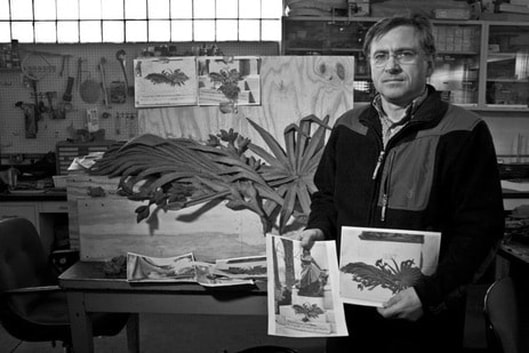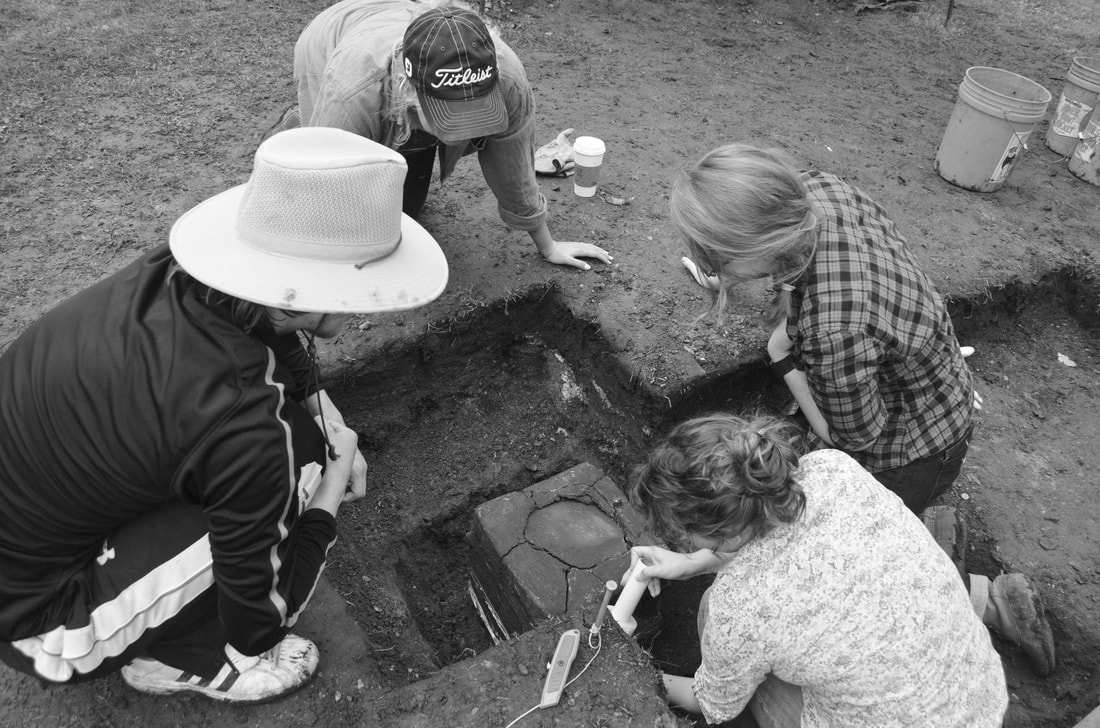Haymarket Affair
|
Chicago with its strong labor movement had the nation's largest demonstration on Saturday, May 1, 1886, when reportedly 80,000 workers marched up Michigan Avenue arm-in-arm carrying their union banners. The Eight-Hour Day Movement caught the imagination of worker across the country. On Monday, May 3, the peaceful scene turned violent when the Chicago police attacked and killed picketing workers at the McCormick Reaper. This attack by police provoked a protest meeting which was planned for Haymarket Square on the evening of Tuesday May 4. While the events of May 1 had been well planned, the events of the evening of May 4 were not. Most speakers failed to appear. Instead of starting at 7:30 pm, the meeting was delayed for about an hour. Instead of the expected 20,000 people, fewer than 2,500 attended. Even the Parsons’ left early due to the weather.
The Haymarket meeting was almost over and only about two hundred people remained when they were attacked by a hundred and seventy-six policemen carrying Winchester repeater rifles. Then someone, unknown to this day, threw the first dynamite bomb ever used in peacetime history of the United States. The police panicked, and in the darkness many shot at their own men. Eventually, seven policemen died, only one directly accountable to the bomb. Four workers were also killed. |

In Chicago, labor leaders were rounded up, houses were entered without search warrants and union newspapers were closed down. Eventually eight men, representing a cross section of the labor movement were selected to be tried.
|
On August 20, 1886, the jury reported its verdict of guilty with the death penalty by hanging for seven of the Haymarket Eight, and 15 years of hard labor for Neebe. Governor Oglesby changed the sentences of Samuel Fielden and Michael Schwab to imprisonment for life. Although 5 of the 8 were still to be hung the next day, on the morning of November 10, Louis Lingg was found in his cell, his head half blown away by a dynamite cap.
In June of 1893, Governor John P. Altgeld pardoned the 3 men still alive and condemned the entire judicial system that had allowed this injustice. |
Passages from The Story of the Haymarket Affair by Willian J. Adelman, essay available in full in “The Day Will Come” booklet
Haymarket Martyrs' Monument
|
Sculpted by Albert Weinert and paid for by The Pioneer Aid and Support Association, the Haymarket Monument was dedicated on June 25, 1893. This was after a historic march in Chicago. Over a hundred years later, in 1997, the monument became a U.S. National Park Service Historic Landmark. The monument includes two steps leading up to a 16-foot-high granite shaft capped by a carved triangular stone. The inscription on the steps read, "1887," the year of the executions. The front facing piece displays a bronze figure of a woman standing over the body of a fallen worker. Below "The day will come when our silence will be more powerful than the voice you are throttling today” is inscribed. This quote is attributed to August Spies just before his execution by hanging. |
On the back of the monument are listed the names of the men buried below. The original was stolen, but the replacement was installed in 2017. The ornate bronze plaque, shown above, contains text of the pardon that was later issued by Illinois governor John Peter Altgeld.
Time Capsule

Mark Rogovin, a Forest Park resident and labor historian, and Bleue Benton, an Oak Park Public Library research librarian, first found mention of the capsule in a Chicago Tribune article from Nov. 7, 1892. It describes a capsule being ceremonially buried under the cornerstone of the monument. (Image from Chicago Morning News Record, November 7, 1892)
The Pioneer Aid and Support Association listed the contents of the capsule within the article. They included mention of articles from Chicago newspapers from the Haymarket era. There was also a long list of documents from a variety of labor unions, including Beer Brewers Union No. 18, the Progressive Cigar Makers Union 160, and the Ladies Tailor Union. Reportedly, there are also documents from the Socialist Men's Choir, the German Ladies Society and other labor organizations.
The time capsule also includes more personal items such as letters penned by the martyrs and their family photographs. Lastly, there is a large collection of court documents from the "Great Trial of the Anarchists in 1886." These documents were interred with the intention of being remembered for their historic significance by future generations.
When Rogovin learned of the capsule's existence, he contacted archeologists in the area and organized an effort to discover its location. Using ground penetrating radar and cemetery records the location of the time capsule was determined. Dr. Rebecca Graff, a professor and fellow at Lake Forest College, led the effort with thirteen students from Lake Forest and seven from De Paul on October 1st and 2nd 2016. The students sifted through layers of dirt despite the pouring rain.
Mark Rogovin, a Forest Park resident and labor historian, and Bleue Benton, an Oak Park Public Library research librarian, first found mention of the capsule in a Chicago Tribune article from Nov. 7, 1892. It describes a capsule being ceremonially buried under the cornerstone of the monument. (Image from Chicago Morning News Record, November 7, 1892)
The Pioneer Aid and Support Association listed the contents of the capsule within the article. They included mention of articles from Chicago newspapers from the Haymarket era. There was also a long list of documents from a variety of labor unions, including Beer Brewers Union No. 18, the Progressive Cigar Makers Union 160, and the Ladies Tailor Union. Reportedly, there are also documents from the Socialist Men's Choir, the German Ladies Society and other labor organizations.
The time capsule also includes more personal items such as letters penned by the martyrs and their family photographs. Lastly, there is a large collection of court documents from the "Great Trial of the Anarchists in 1886." These documents were interred with the intention of being remembered for their historic significance by future generations.
When Rogovin learned of the capsule's existence, he contacted archeologists in the area and organized an effort to discover its location. Using ground penetrating radar and cemetery records the location of the time capsule was determined. Dr. Rebecca Graff, a professor and fellow at Lake Forest College, led the effort with thirteen students from Lake Forest and seven from De Paul on October 1st and 2nd 2016. The students sifted through layers of dirt despite the pouring rain.
The first item unearthed was believed to be the urn vault holding the remains of Oscar Neebe, one of the individuals pardoned. He passed away around thirty years after the trial, in 1916. The urn was resting atop the cylinder, which was largely believed to be the time capsule. After the cylinder was removed, it was X-rayed. Interestingly enough, the x-rays show what appears to be a metal urn, and not the time capsule. Now, we are all left wondering, who rests within the metal urn? And where does the real time capsule reside?
Passages from Forest Park Review article by John Rice
Passages from Forest Park Review article by John Rice
Timeline
Printable Handouts
English
|
Español
|
Deutsch
| ||||||||||||||||||













